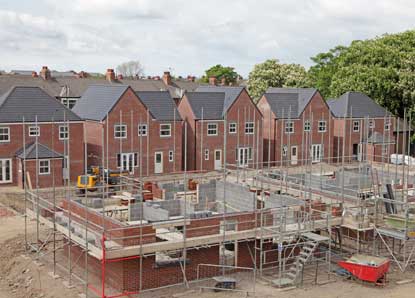By Richard Johnstone | 27 September 2013
All of the New Homes Bonus funding intended to encourage councils to approve housebuilding should be given to Local Enterprise Partnerships to ensure construction of new properties is coordinated between authorities, the CBI has recommended.

The business group said duties in the National Planning Policy Framework intended to ensure councils cooperate on housebuilding had not yet been effective.
The next regeneration report, undertaken with consultants EC Harris, said LEPs therefore needed ‘to play an active role, working with local authorities to plan for housing to support the whole local economy’ to support cooperation.
Councils should pool the money they receive through the NHB at the LEP level, so they are ‘incentivised to work more closely with one another to plan for sufficient housing’. This would also ensure the funding is invested in shared priorities for the local economy, the report stated.
Katja Hall, the CBI’s chief policy director, said pooling would ‘deal with some of the frustration we’ve pick up on about local authorities competing for relatively small pots of money, and try to look at how we can encourage local authorities to coordinate their activities’.
She added: ‘We’re suggesting that [the government] should route the New Homes Bonus through the LEP to encourage greater cooperation.’
The NHB is paid to councils to match the additional council tax raised on new homes for six years. Many authorities had included the cash in their indicative budgets, but the Treasury has already announced that £400m of the bonus would be top-sliced to create the Single Local Growth Fund. This has led to fears that vital infrastructure projects such as rural broadband and transport schemes could be put at risk.
The CBI report also called for a new partnership between public and private sectors to support regeneration and economic growth across the country. Among the recommendations was a call for annual business rate increases to be capped at 2% while a review of the system is undertaken.
Planning changes have also been recommended to make it easier to convert empty shops into homes, while the public sector balance sheet should be used to kick-start developments.
In particular, the government should lift restrictions on the use of Tax Increment Financing schemes by councils, the report stated.
Under the government’s localisation of 50% of business rate growth to local authorities, councils are able to borrow for infrastructure schemes that will unlock development, and pay back the loans with increased rates.
There are currently two different types of schemes. ‘Tif 1’ will see the increased rate revenue included in the localisation system of levies, top-up and tariffs, which means the extra income could be lost to councils when the system is reset in 2020.
‘Tif 2’ allows councils to hold onto all of the business rate growth for a period of 25 years outside the resets. However, the value of schemes that can proceed under this system has been capped at £150m.
This longer time period should be available for all Tif schemes, the report stated.




















